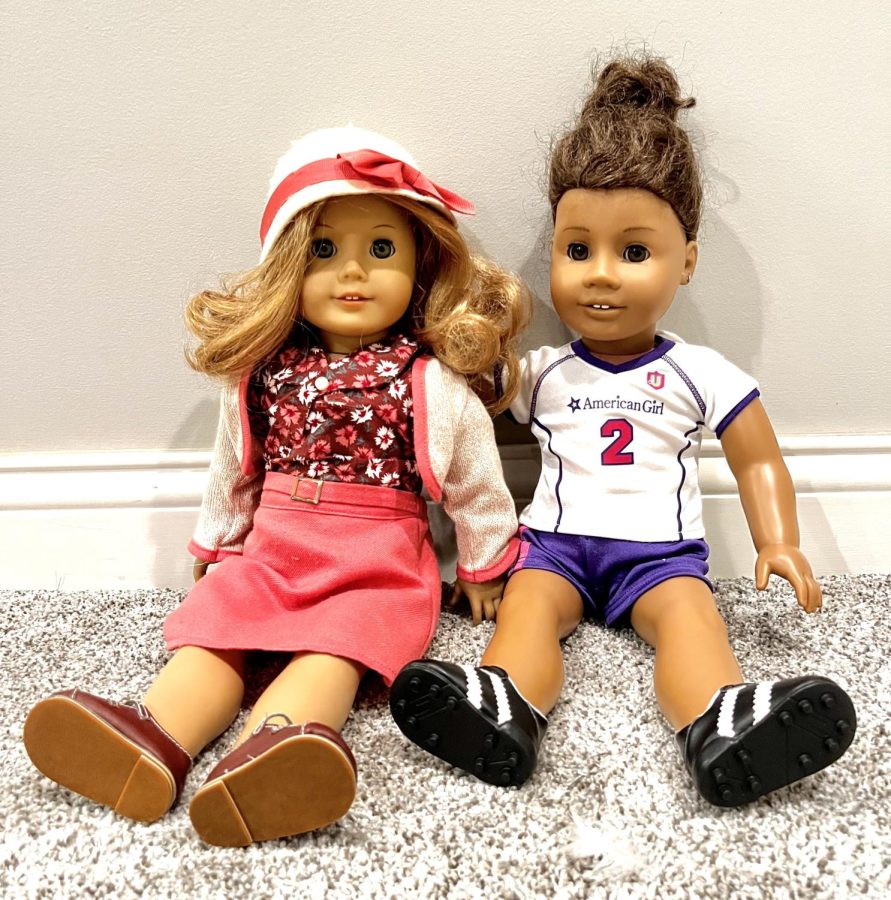American Girl Dolls have long endured as a staple part of American youth culture, highlighting people from all walks of life through the lens of girlhood. From dolls set in colonial periods to characters living in modern-day society, the dolls offer backstories that provide historical context and inspire young children to be independent.
The American Girl Doll company recently announced that its Girl of the Year 2023 is Kavi Sharma, the first South Asian doll chosen since the line was created in 2001. Kavi is an Indian-American girl from New Jersey who loves to sing, take Indian dance classes and celebrate her culture through clothes, holidays and food.
Showcasing cultural diversity and what it means to be an American girl today, Kavi provides essential representation for young South Asian children across the nation as the newest member of the collection.
For many children who grew up with American Girl dolls, the toys not only became a cherished part of their childhoods but points of reference for how girls throughout history lived. Elaborate backstories and personalized accessories and clothes are thoughtfully customized for each doll, bringing the past to life and preparing young children to step into an increasingly diverse and socially-conscious world.
Growing up, senior Olivia Rogers had multiple American Girl dolls, including one African-American doll, one of Jewish descent and a native Hawaiian doll. “I feel like as I was younger and grew up, American Girl dolls gave a bit more of a perception and an inside look into other cultures. I loved reading the dolls’ books and learning about their history,” Rogers said.
The brand strives to impact the lives of young girls in a positive way and inspire a new generation through dolls that don’t fit the cookie-cutter stereotype. In stark comparison to Bratz, Barbies and other competing doll brands, the American Girl Doll breaks out of a long string of shallow, gender-defining stereotypes.
The website advertises dolls with accompanying catchphrases like “Stand up for girls’ rights and make a difference” and “Stay true to you and don’t be afraid to stand out,” encouraging young children to champion for independence and be voices for positive change.
The brand’s most commendable initiative, The Historical Collection, was launched in 1986 with a mission of teaching history to children by using a character near their age. At the time of its release, the doll industry primarily focused on fantasy dolls marketed as young babies for the owners to care for. In contrast, the American Girl doll line was a trailblazer for promoting educational information rather than sexist gender roles.
The Historical Collection marketed dolls aged eight to ten to show children history through the perspective of a character the children could relate to. For instance, the Felicity Merriman doll represents English Colonial America in the pre-Revolutionary War period and is described as tomboyish, spunky and daring. The Kit Kittredge doll is an aspiring reporter living through the Great Depression, showing little interest in stereotypical female interests like baking, dancing or dresses.
Even more praiseworthy, the brand recounts history beyond that of the white Eurocentric perspective. The eighth doll in the historical series, Kaya, is an early Native American of the Nimíipuu tribe who lives an outdoor lifestyle and cares deeply about her family and friends. Her ambitious free spirit gets her in trouble at times, but she hopes to become a strong, generous leader for her people.
Similarly, the Hawaiian Nanea Mitchell doll sheds light on Pearl Harbor, the Addy Walker doll represents an African American girl during the tail end of the Civil War and the Rebecca Rubin doll highlights American Jewish culture in the World War I era.
The brand continues to periodically release Historical Characters as well as contemporary dolls in the Truly Me line. Still surging in popularity, American Girl Doll has expanded its network in the form of international American Girl Doll stores, cafes, wellness centers, book collections, Youtube channels and more.
Like Rogers, senior Sophia Ramaraju grew up with American Girl dolls that gave her insight into cultures different from her own. “When you’re younger, you’re influenced really easily. For me, each American Girl doll represented a different lifestyle and a different culture throughout history and that’s kind of how I learned about different cultures when I was younger.”
“Now, this new doll will be for others what the Historical Collection was for me — a depiction of a culture that breaks out of the stereotype,” Ramaraju continued.
As a brand that has long been a positive influence on young girls, American Girl Doll’s newest Girl of the Year is sure to become a mirror for young Indian girls to see a reflection of themselves and a welcoming window for other young girls to see life and culture different than their own.
















